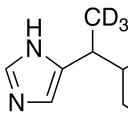Antifibrotic effect of the Chinese herbs Modified Danggui Buxue Decoction on adriamycin-induced nephropathy in rats.
Avainsanat
Abstrakti
OBJECTIVE
To investigate the antifibrotic effect of the Chinese herbs Modified Danggui Buxue Decoction (, MDBD) on adraimycin-induced nephropathy in rats.
METHODS
Thirty-two male Sprague Dawley albino rats were randomly divided into 4 groups: the control, model, and two treatment groups, with 8 in each group. Nephropathy was induced in the latter 3 groups by intravenous injection of adriamycin. Rats in the two treatment groups received intragastric administration of benazepri (a positive control) or MDBD, which is composed of extracts of Radix Angelicae sinensis, Astragalus membranaceus (Fisch.) Bge and Rhizoma chuanxiong. Serum albumin, blood lipids, 24-h urine protein and urine N-acetyl-b-D-glucosaminidase (NAG) were measured every 2 weeks. The ratio of kidney to body weight was measured. The expressions of extracellular matrix proteins in the renal cortex, including colleagen IV (Col-IV) and fibronectin (FN), were examined by immunohistochemistry, and the transcription of genes encoding transforming growth factor β1 (TGF-β1), the tissue inhibitors of matrix metalloproteinase 1 (TIMP-1) and matrix metalloproteinase 9 (MMP-9) were analyzed by reverse transcription-polymerase chain reaction (RT-PCR) at the end of the 8-week treatment.
RESULTS
Compared with the untreated rats in the model group, MDBD significantly increased serum albumin, lowered the blood lipids and decreased the ratio of kidney to body weight. MDBD significantly reduced the excretion levels of urinary protein and NAG as well as the accumulation of extracellular matrix (ECM), including Col-IV and FN, in the renal cortex. Further, MDBD decreased TIMP-1 and TGF-β1 gene expressions and increased MMP-9 gene expression in the kidney.
CONCLUSIONS
MDBD was effective in treating the rat model of nephropathy. The clinical benefit was associated with reduction of renal fibrosis. The antifibrotic effect of MDBD may be mediated through the regulation of TIMP-1, MMP and TGF-β1 gene expressions.


